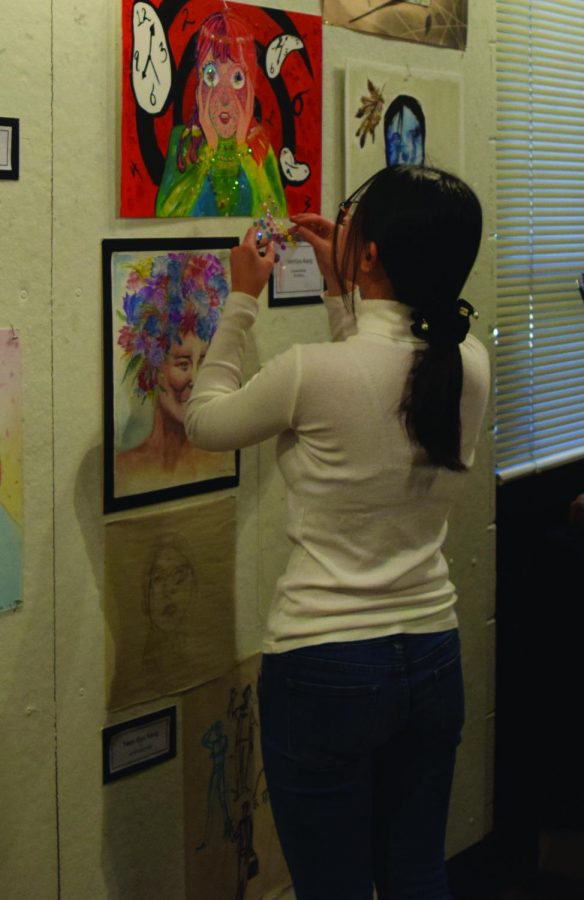Myth of the Starving Artist
Junior art student Yeongyu Kang adds more to her art work during the school art show in December 2018. Photo by Athena Stamos
March 25, 2019
From drawing to ceramics to photography, Parkway Central has a lot of art classes to offer. But what about chasing a love for drawing and sculpture outside of high school? You may have heard jokes or been discouraged from becoming an artist because of the perception that striving to be one results in becoming a ‘starving artist’. However, that is far from the truth. The joke is just that, a joke, and the myth of the starving artists no longer has a place in real college and career decision making.
First off, I’m gonna lay out some background information. I have been wanting to pursue the arts in college since sophomore year. I’ve taken every art class known to PCH kind, and gone out of my way to take AP classes, college courses over the summer, and done a ton of research into schools. So, imagine my chagrin when every time I tell a friend about my passions, they tell me something like: “Isn’t that a waste of time?” or, “You know you’re not going to make any money out of college, right?”.
It’s frustrating to say the least. Especially when it’s completely untrue.
Everywhere you look there’s art with a designer behind it. Everything you wear, every phone case, book cover, building, poster, video game, all had artists behind them. Those commercials on TV had to be written and storyboarded by artists. Every logo EVER had to be very carefully designed. We have a culture built on art, many people just don’t realize it. This newspaper you’re reading right now had a whole team of creative people behind it.
There is a plethora of creative careers available for people to pursue, and currently the graphic design industry is an endless well of growth. While some websites will claim that statistics for unemployment for artists is extremely high, the truth is those statistics will purposefully leave out artists who are self employed, which accounts for a large portion who go on commission work.
So why all of the stereotypes? Why do they exist, and why do they continue to be believed? To answer this, I had a chat with Cara Deffenbaugh, a masters graduate from Maryland Institute College of Art, and traditional arts teacher.
“I think attending art college still has a stigma attached to it. That you’re going to be a ‘starving artist.’” Deffenbaugh said. “If you’re willing to be innovative, creative, and have the passion, then there are going to be jobs out there for you.”
But there’s another thing many have complaints about. Why is art college so expensive? “College is expensive, period! They’re private schools, if you compare them to other private schools, you would see they match up.” Deffenbaugh said.
Some of Deffenbaugh’s students have gone on to work for the Wall Street Journal, the Saint Louis Botanical Gardens, FEAST magazine, and more. Many of her students who went to pursue the arts ended up just fine, like any other student going off to college.
It really is all just old and tired stereotypes. But where did these stigmas against the arts come from? This view of artists stems back all the way to Romanticism in the 18th century, where those who pursued the arts were depicted as passion driven individuals, and would continue their craft even if it meant being impoverished and unable to take care of themselves. This is not what artists are today as fields in the arts only continue to grow. Traditional artists still have it rough sometimes, but the value of art has only grown. At the end of the day, the value people hold for their craft is immeasurable with money, as many artists who aren’t incredibly successful still feel it was what they needed to do to be happy.
Careers are important to think about as high schoolers. But shockingly, less people are thinking about things that are their passions as future careers and more about what will make them money. But what’s money if you’re miserable? Even if the stereotypes about artists were true, one thing is certain:You don’t go into the arts to become extremely wealthy, and they seem perfectly content with their jobs. And I’m fine with that too.

